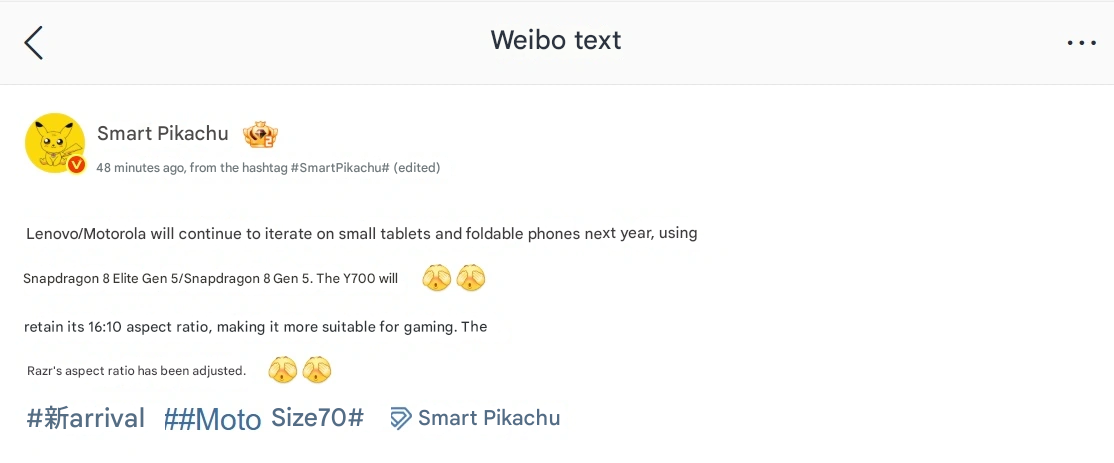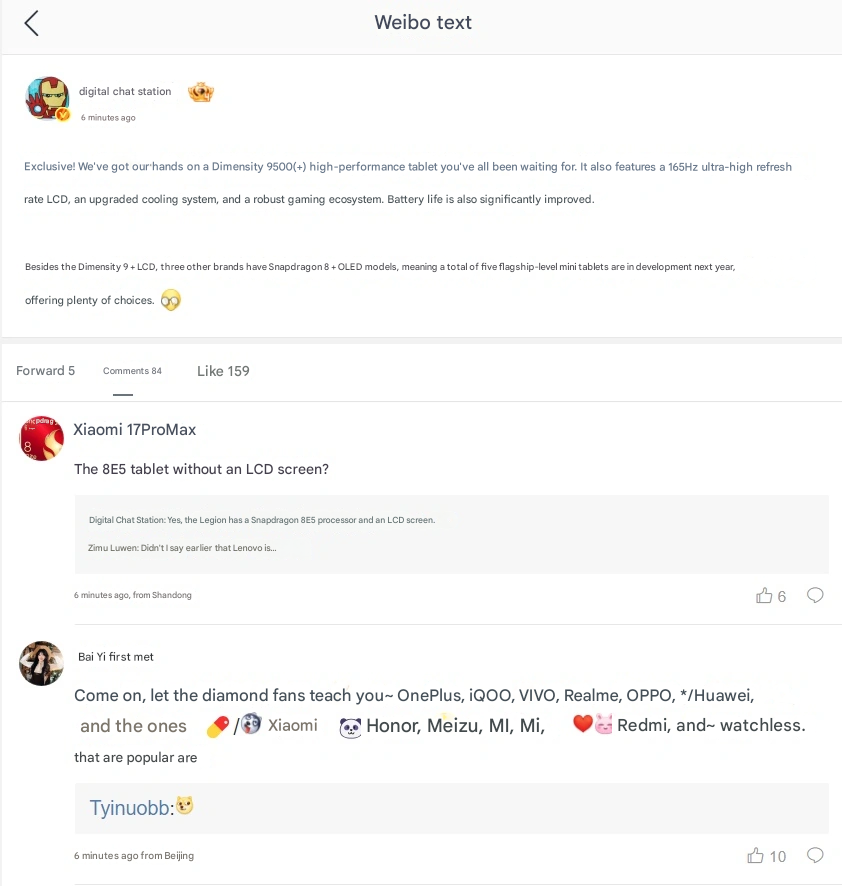Xiaomi’s competitive position in the compact tablet market is expected to get hotter next year, as multiple manufacturers prepare flagship-level mini tablets with advanced performance features. According to early industry reports, five high-end small-format tablets are currently in development, including two LCD models with gaming-centric hardware. This trend strengthens expectations that the upcoming REDMI K Pad may directly challenge compact devices like the Xiaomi Pad Mini concept while expanding Xiaomi’s position in performance-focused mobile ecosystems.
High-Performance Mini Tablets: Industry’s Next Move
Recent reports indicate that one of the new compact tablets will be powered by the MediaTek Dimensity 9500+ chipset combined with a 165Hz ultra-high-refresh-rate LCD panel. It will also have an improved thermal management system and an ecosystem tuned for high-refresh-rate gaming. Early insights indicate solid improvements in sustained performance and battery life, making it one of the most advanced LCD-based gaming tablets in its class.
The leak also suggests that three other brands will prepare mini tablets with Snapdragon 8-series processors and OLED displays. These models aim to deliver premium visual quality and higher peak performance, offering consumers multiple flagship-level options across different display technologies.
REDMI K Pad Positioned for High-Refresh Gaming
The REDMI K Pad already balances performance and value in China and looks to be part of this burgeoning segment. Perhaps targeting users looking for a compact yet powerful entertainment device, Xiaomi is most likely preparing a next-generation gaming-class LCD screen with a strong mid-to-high-end chipset. This will be in line with Xiaomi’s strategy, offering diversified display options: OLEDs for cinematic viewing and LCDs for competitive gamers, due to the former’s lower latency and higher refresh stability.
The competitive positioning also suggests that the REDMI K Pad could serve as a bridge between Xiaomi’s mainstream tablet lineup and its performance-oriented gaming ecosystem, particularly with HyperOS optimizations.
Lenovo and Moto fortify their small-device portfolio.
Notably, according to industry sources, Lenovo Legion is planning a compact gaming tablet fitted with the Snapdragon 8E5 chip coupled with an LCD panel, a move that will further reinforce the demand for high-performance gaming displays in smaller form factors.
Follow-up leaks on November 14 showed that Lenovo and Motorola plan to continue their work on small tablets and compact foldables come 2025. The new Y700 (next-gen) is supposed to employ the Snapdragon 8 Ultra chip, but retain the 16:10 aspect ratio, a format preferred by gaming users due to its comfortable field of view.
Meanwhile, there are rumors that the new moto razr 70 foldable smartphone will adopt the Snapdragon 8 Gen 5 for better power efficiency and slightly different screen proportions.
A Growing Market for Advanced Mini Tablets
The simultaneous development of five flagship-grade compact tablets-especially with two high-end LCD models-points to renewed industry interest in high-performance small devices. For users looking for compact yet powerful hardware for gaming, entertainment, or productivity, 2025 is set to deliver a significant increase in options for both OLED and LCD display technologies.


 Emir Bardakçı
Emir Bardakçı



